The latest edition of “Architizer: The World’s Best Architecture” — a stunning, hardbound book celebrating the most inspiring contemporary architecture from around the globe — is now available. Order your copy today.
China’s construction has been explosive. Within the last decade, China has emerged as the world’s largest construction market, and the country is expected to account for a significant share of all new global construction over the next five years. As such, there has been a steady stream of architectural news on China and the country’s radically evolving urban fabrics. This rapid urbanization has led to significant debate on the country’s building practices, from construction quality and labor demands to cultural heritage and long-term sustainability. At its heart, China’s urbanization is largely due to economic reforms made by the Chinese government in the late 1970s. These would lead to rapid economic growth and the accelerated development we continue to see today.
Amid ghost cities, mega-projects and entirely new economic zones, China’s cultural architecture has transformed. New centers for art are being built at breakneck speeds, and museums and creative facilities are being increasingly designed by architects outside China. While powerful, critical works are being created by Chinese designers like Wang Shu and Ai Weiwei, China’s cultural landscape has become a testing ground for national and international designs alike. Taking a closer look at China’s museums and art scene, the following collection explores 10 projects located across the country. Built at a variety of scales with widely varied formal expressions, the projects begin to show how the country’s rapid development has begun to shape its new cultural architecture.

© Steven Holl Architects

© Steven Holl Architects
Nanjing Museum of Art and Architecture by Steven Holl Architects, Nanjing, China
Steven Holl’s Nanjing Museum was made to explore layers of space and shifting viewpoints. A light “figure” was designed to hover about a field of parallel perspective spaces and garden walls. The colors of the museum were chosen to connect back to Chinese paintings and act as a background to feature the artwork within.
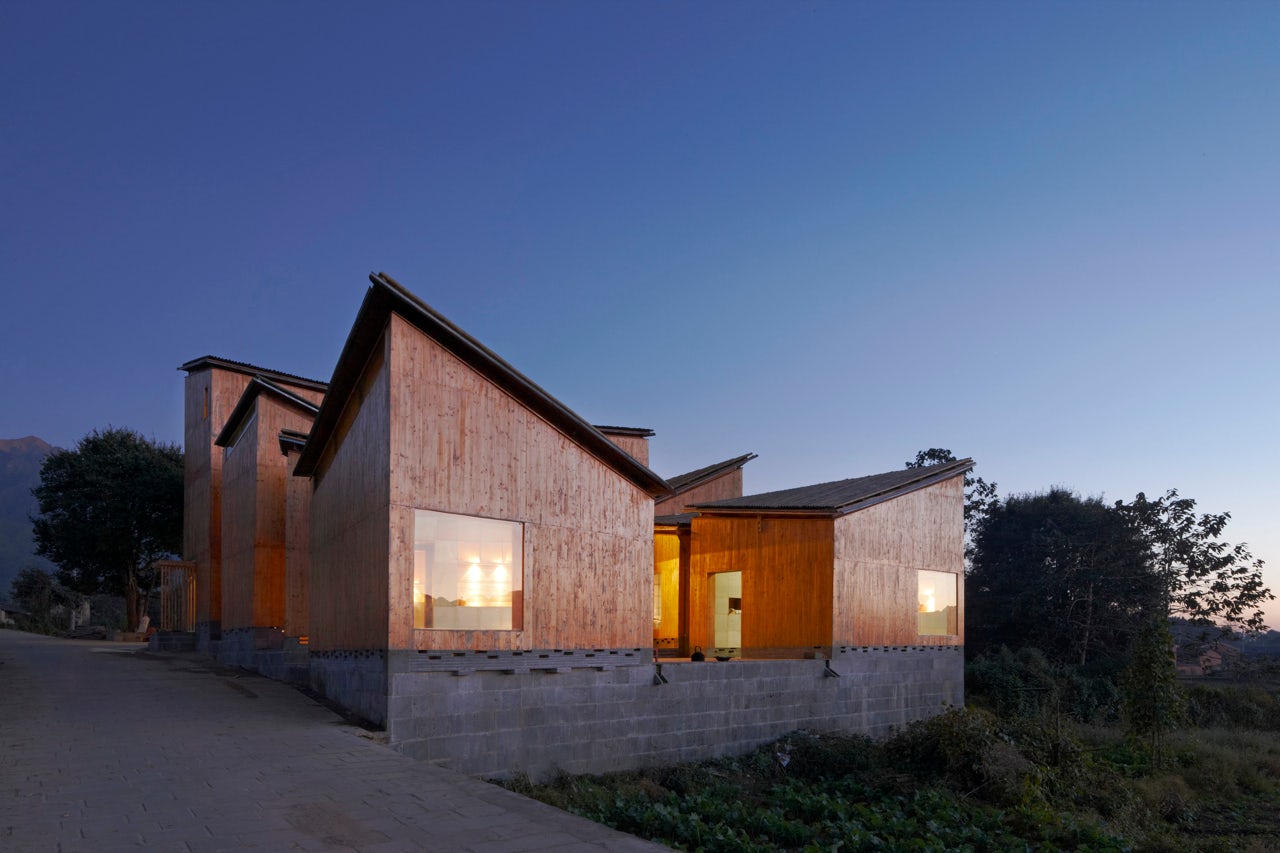
© Trace Architecture Office
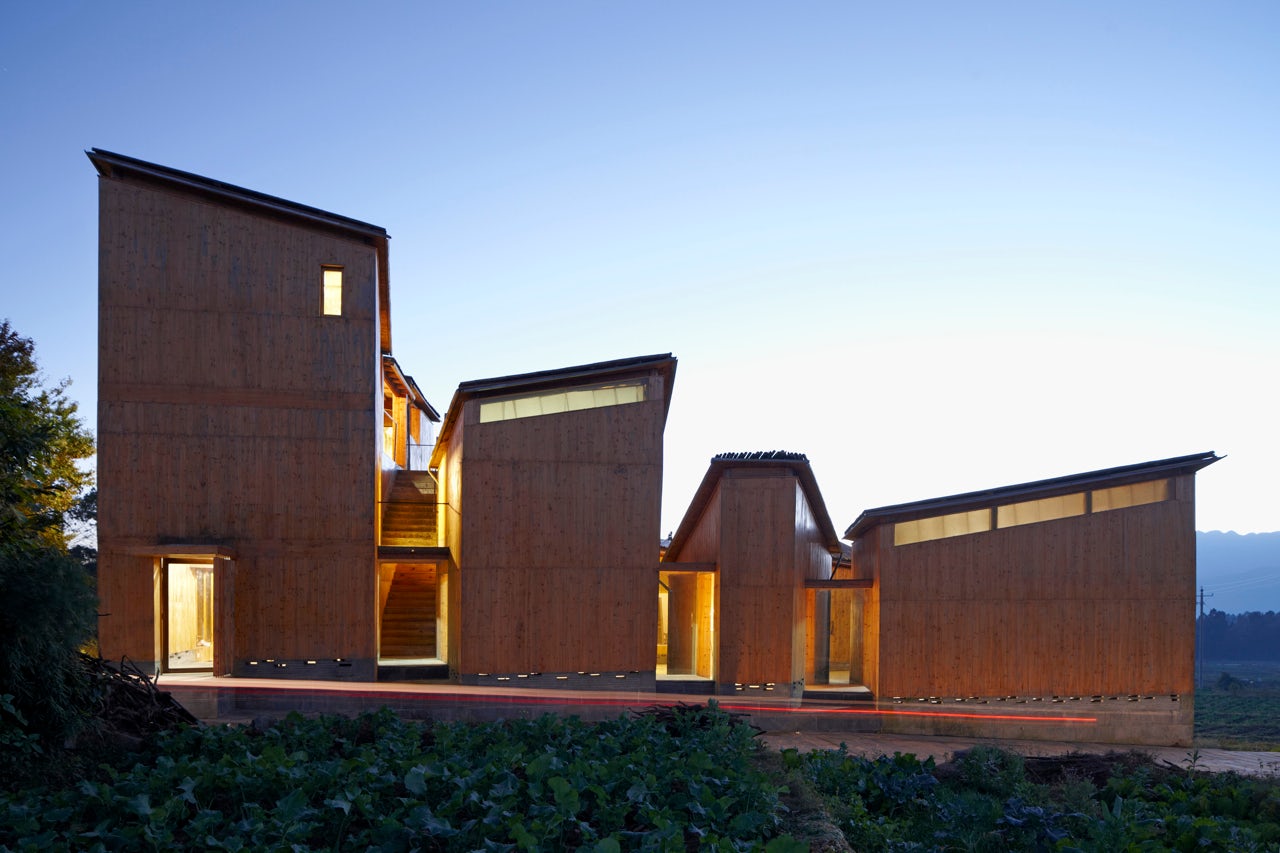
© Trace Architecture Office
Museum of Handcraft Paper by Trace Architecture Office, Xinzhuang Village, Yunnan, China
Located under Gaoligong Mountain, this museum is sited next to Xinzhuang village in a world ecological preserve. Building off the village’s tradition of papermaking, the project is part of a larger initiative to preserve the art itself, as well as its technique and community value. The museum was designed as a micro-village, a cluster of several small buildings acting as a window into Xinzhuang itself and the papermaking process.
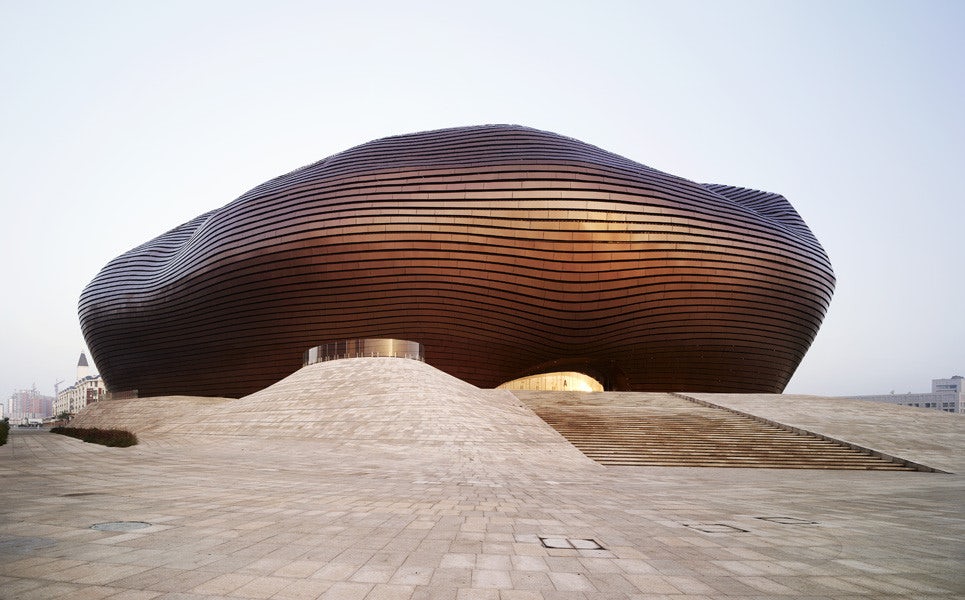
© MAD Architects

© MAD Architects
Ordos Art and City Museum by MAD, Ordos, China
The Ordos Museum by MAD was designed as an amorphous building in response to the strict geometry of the site’s masterplan. Clad in polished metal louvers, the project appears as a windowless solid anchored to the ground. Inside, the logic changes, and the various spaces embrace light, movement and discovery.

© KSP Jürgen Engel Architekten

© KSP Jürgen Engel Architekten
Jiangsu Provincial Art Museum by KSP Jürgen Engel Architekten, Nanjing, China
This museum project was located in the cultural center of Nanjing next to the historic Presidential Palace. As one of the most important museums in southeast China, the project includes space for both temporary exhibitions and a permanent collection of Chinese art. The museum’s two interlocking u-shaped buildings are joined together by a 56-foot-high access area and a light glass roof.

© leeMundwiler

© leeMundwiler
Dapeng Geology Museum and Research Center by leeMundwiler, Longgang, Shenzhen, China
Located on the Dapeng Peninsula across from Hong Kong Bay, this geology museum appears as a large rock formation that unfolds to visitors. The façade was designed to be covered in plant growth, while the structure was made to resemble strewn rock.

© Rocco Design Architects Limited
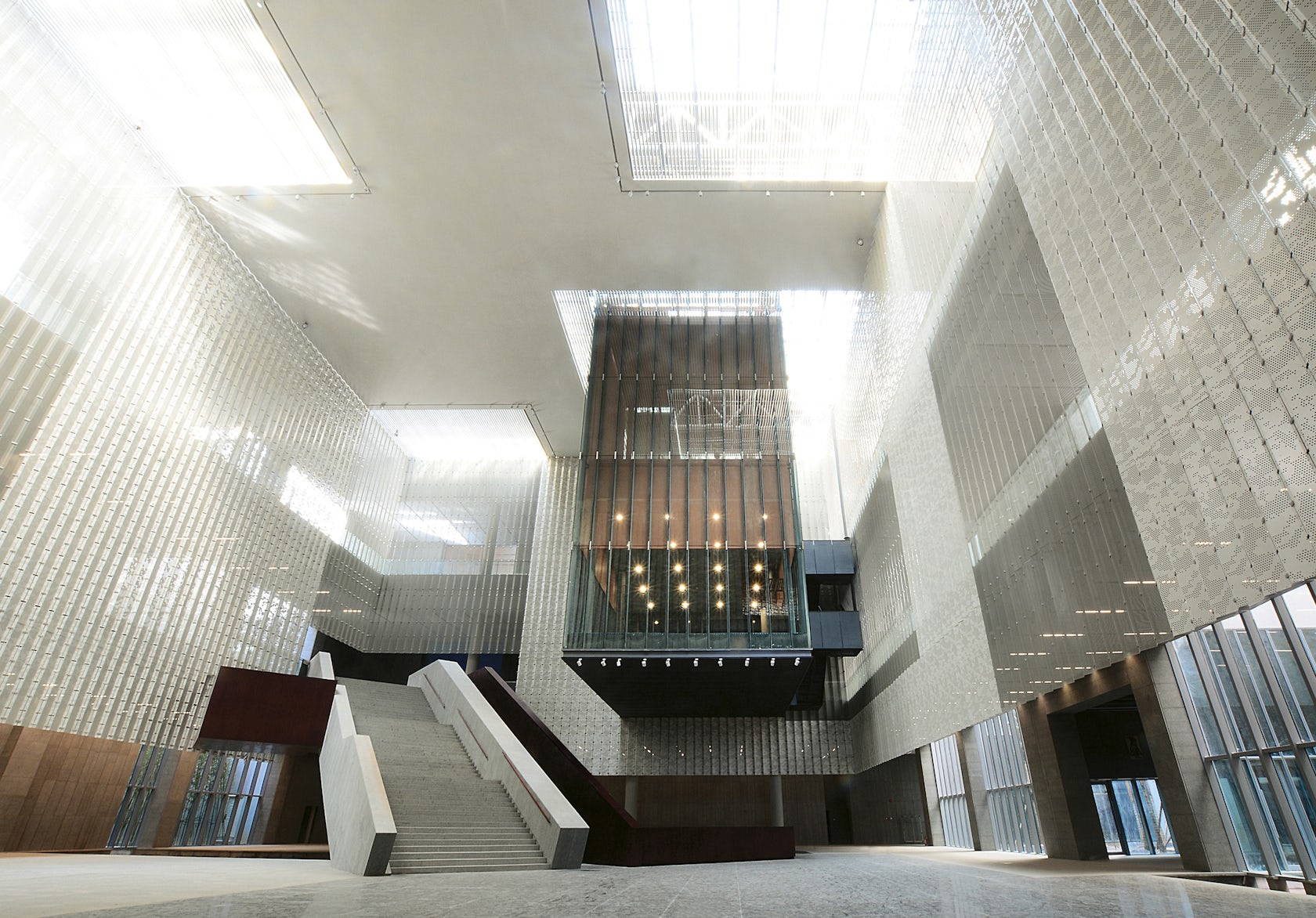
© Rocco Design Architects Limited
Yunnan Museum by Rocco Design Architects Limited, Kunming, China
Inspired by Yunnan’s famous “stone forests,” this museum was designed as stacked boxes holding fragile treasures. Visitors are greeted by a narrow entrance which opens up onto a large central atrium space. The project’s façades were created with a number of cuts and fins to link to the city and integrate structural support.
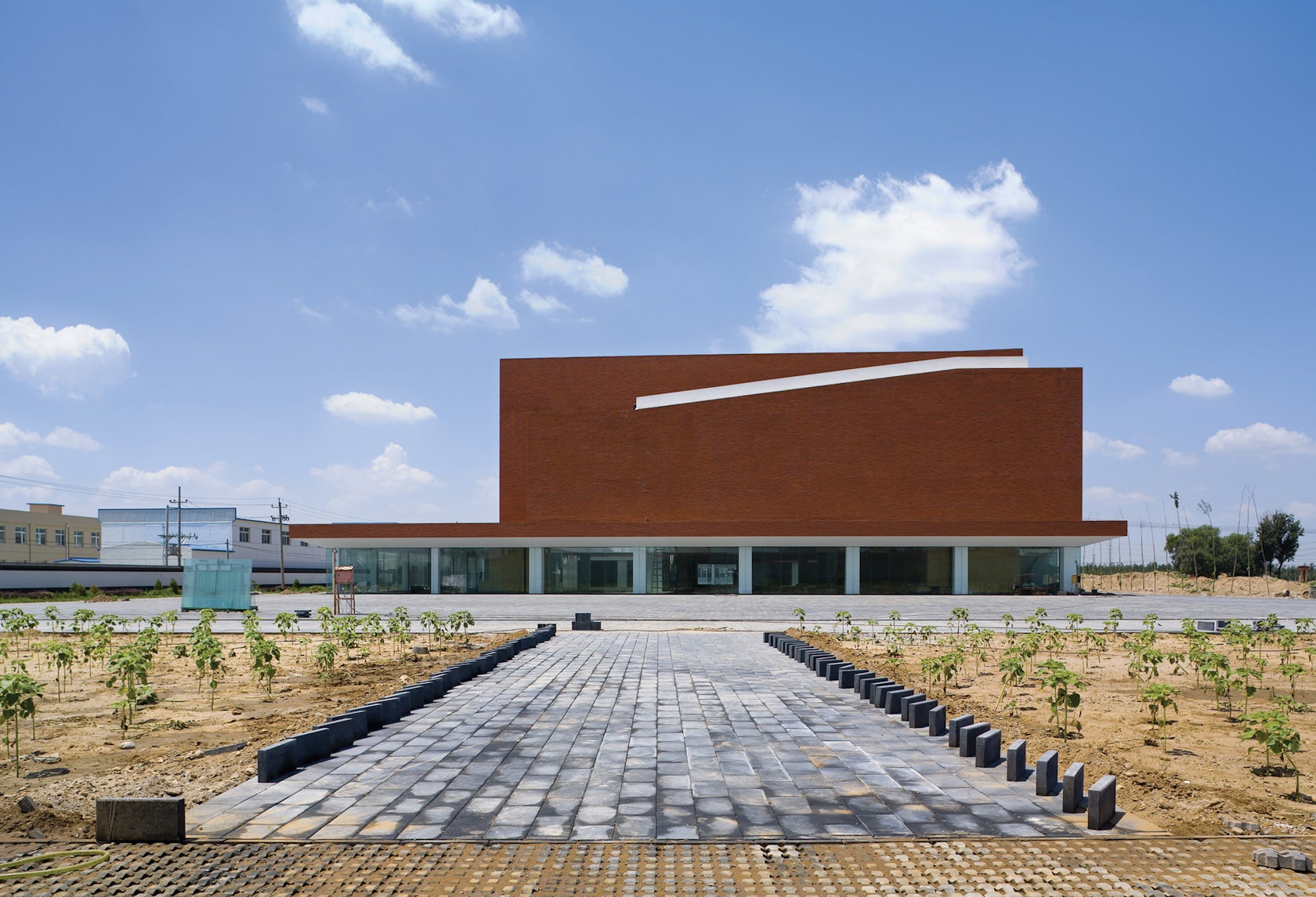
© DnA_Design And Architecture

© DnA_Design And Architecture
Songzhuang Art Museum by DnA_Design And Architecture, Songzhuang, China
The Songzhuang Art museum was designed as the first public art facility in the village. Providing space for the local community and over 4,000 artists, the project includes exhibition spaces with horizontal and immersive flow. The museum also includes multi-purpose spaces and causal common areas for events.

© Preston Scott Cohen, Inc
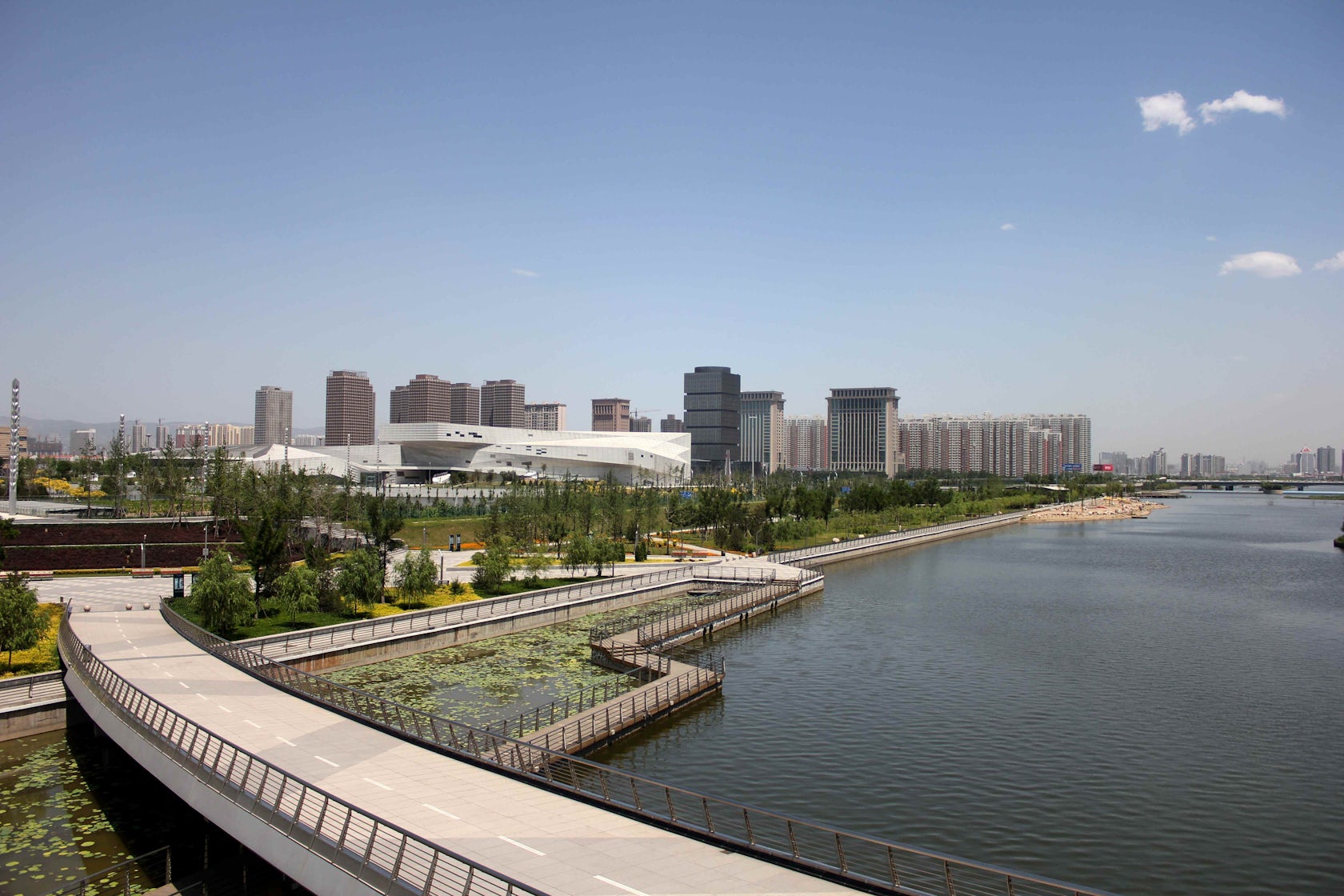
© Preston Scott Cohen, Inc
Taiyuan Museum of Art by Preston Scott Cohen, Inc, Taiyuan, China
Created as a cluster of buildings joined by promenades, the Taiyuan Museum of Art responds to the surrounding urban park. An exterior ramp connects various hardscapes, while the building merges with the landscape to form various experiences and moments. Programmatically, the project includes exhibition space, a library, admin spaces, auditorium, restaurant and a bookstore.
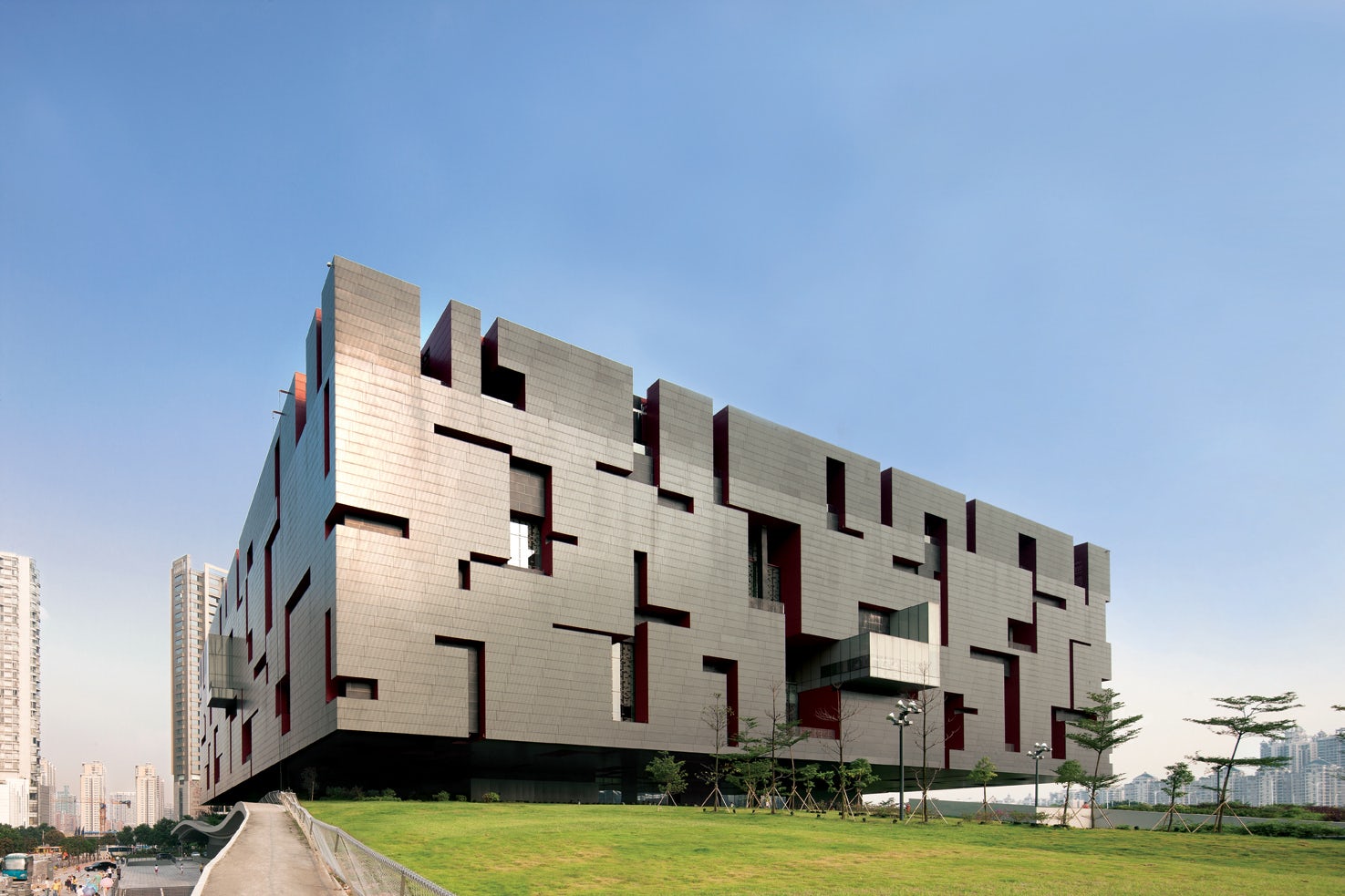
© Rocco Design Architects Limited

© Rocco Design Architects Limited
Guangdong Museum by Rocco Design Architects Limited, Guangzhou, China
The Guangdong Museum was designed as an ‘objet d’art’at a monumental scale. One of four major cultural landmarks in Guangzhou, it was created as an intricately sculptured artifact. The museum’s treasure-box concept was punctured by various geometric voids recessed into the building mass.
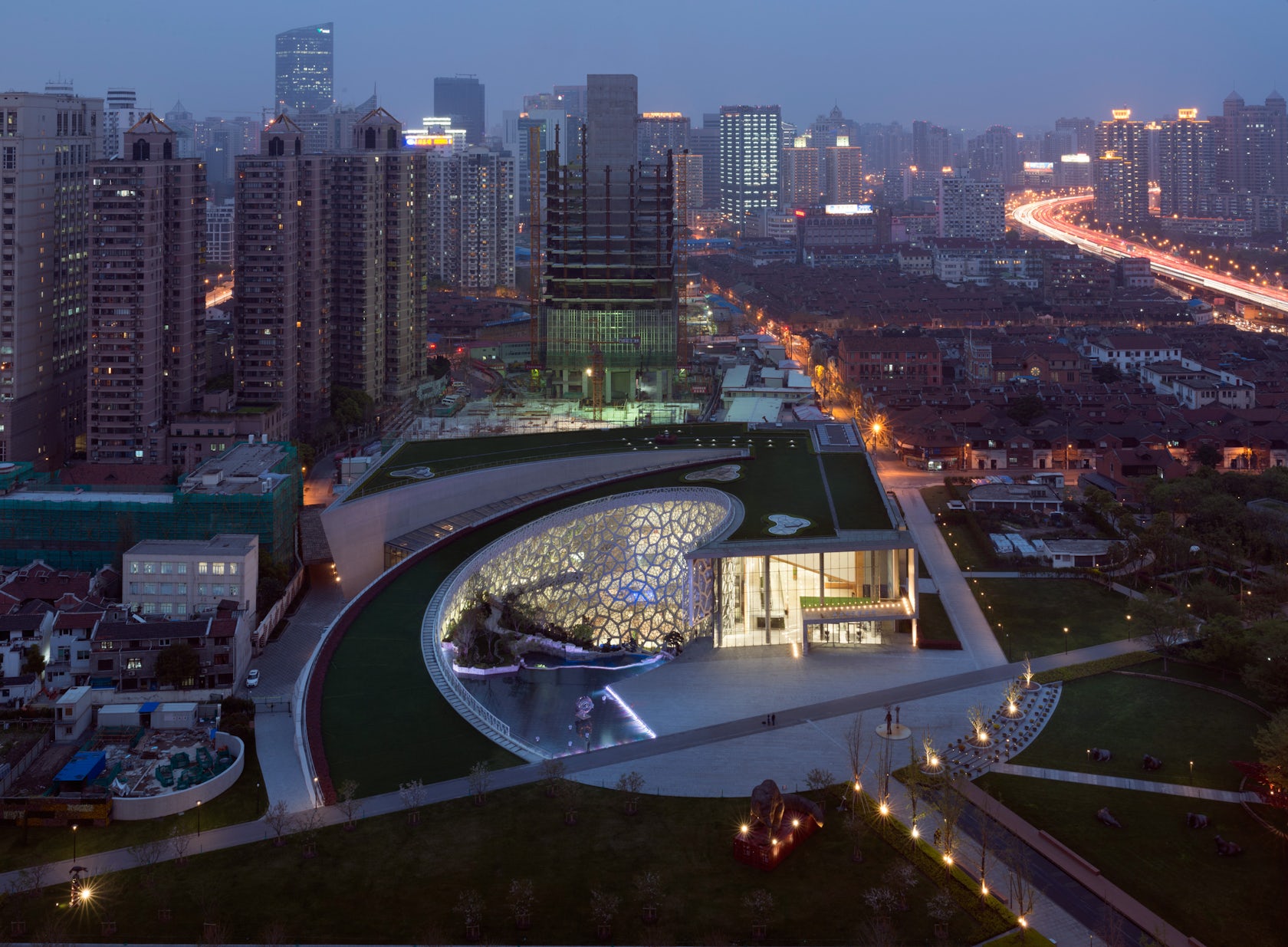
© Perkins&Will

© Perkins&Will
Shanghai Natural History Museum by Perkins+Will, Shanghai, China
Displaying more than 10,000 artifacts from seven continents, the Shanghai Natural History Museum was organized like a nautilus shell. The design includes exhibit space, a theater, outdoor garden and a monumental glass wall inspired by the cellular structure of animals and plants. The bioclimatic building responds to the sun with an intelligent skin, courtyard pond and geothermal system.
The latest edition of “Architizer: The World’s Best Architecture” — a stunning, hardbound book celebrating the most inspiring contemporary architecture from around the globe — is now available. Order your copy today.




